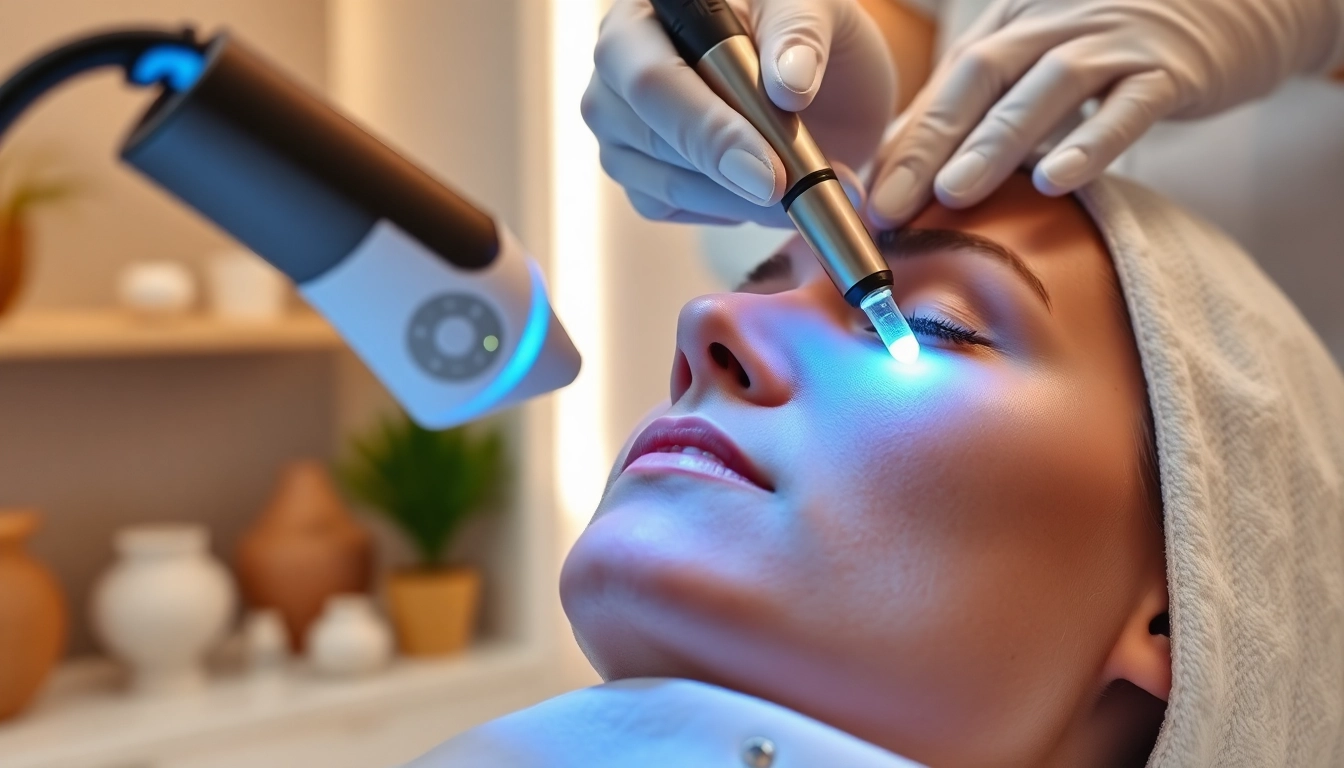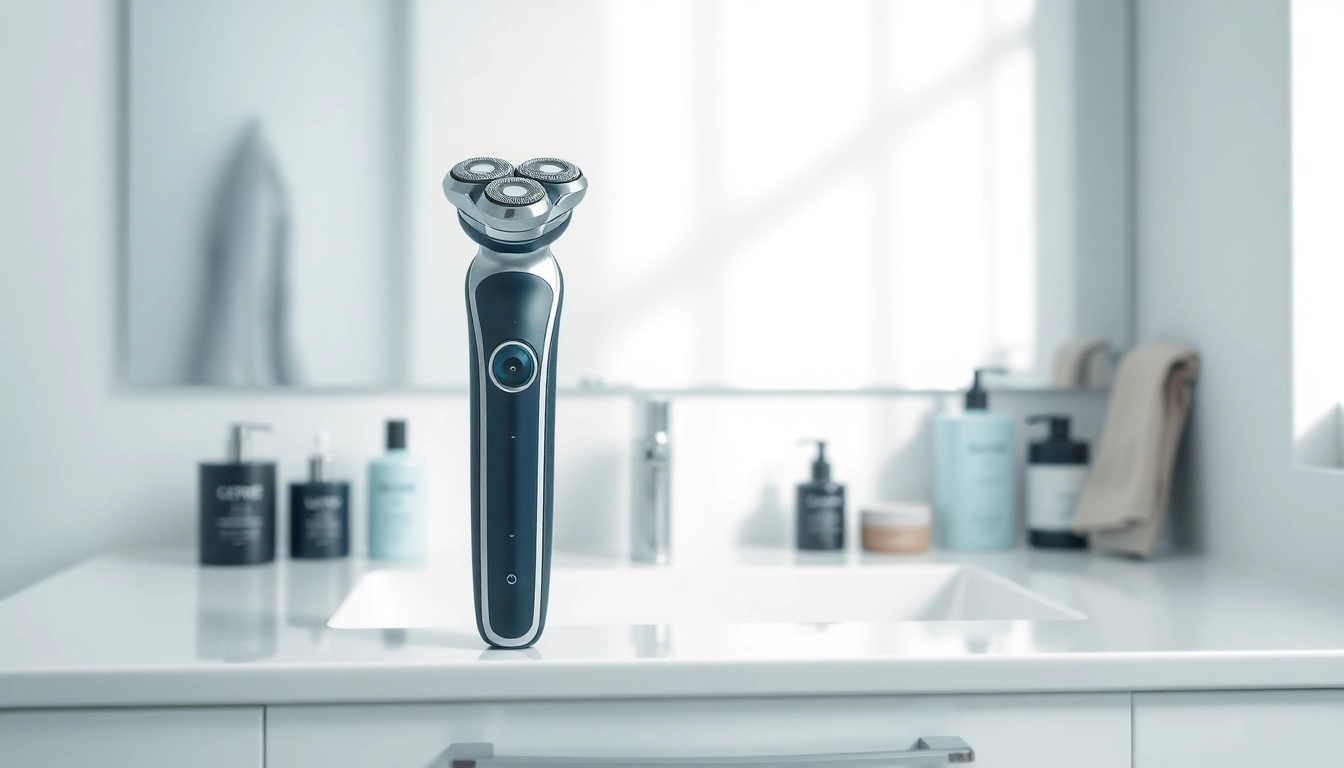What is RF Microneedling?
An Overview of RF Microneedling
RF microneedling is an advanced cosmetic procedure that combines traditional microneedling techniques with the power of radiofrequency energy to enhance skin rejuvenation. This minimally invasive treatment penetrates the skin with fine needles while simultaneously delivering controlled radiofrequency energy to the deeper dermal layers. As a result, RF microneedling promotes collagen production, tightens skin, and improves overall skin texture, making it a go-to solution for many skin concerns, including fine lines, wrinkles, and scars. If you are looking to rejuvenate your skin, a well-equipped clinic specializing in RF microneedling can guide you through the process.
The Technology Behind RF Microneedling
The technology utilized in RF microneedling leverages the power of thermal energy generated through radiofrequency waves. During a treatment session, a handheld device with small, insulated needles creates micro-injuries in the skin, triggering the body’s natural healing response. Simultaneously, the RF energy is delivered through these needles, reaching deeper layers of the skin. This dual action promotes collagen remodeling and skin tightening, facilitating a more youthful appearance without the need for invasive surgical procedures. Additionally, the innovative design of RF microneedling devices allows for precise targeting of various skin depths, ensuring optimal results.
Differences Between RF Microneedling and Traditional Microneedling
While both RF microneedling and traditional microneedling involve creating micro-injuries to stimulate collagen production, the key difference lies in the addition of radiofrequency energy in RF microneedling. Traditional microneedling focuses solely on injury induction and does not incorporate RF energy, limiting its effectiveness in deep skin rejuvenation. RF microneedling, on the other hand, enhances results by targeting deeper layers where collagen and elastin production occurs. Consequently, RF microneedling can lead to more significant improvements in skin tightness, firmness, and overall texture, serving as a superior option for those seeking comprehensive skin rejuvenation solutions.
Benefits of RF Microneedling
Skin Texture Improvement
One of the primary benefits of RF microneedling is its remarkable ability to improve skin texture. The procedure helps reduce the appearance of enlarged pores, acne scars, and uneven skin surface by promoting collagen and elastin production. Patients often notice a smoother complexion and enhanced skin elasticity following treatment, making it an attractive option for individuals concerned about aging or problematic skin.
Reduction of Scars and Stretch Marks
RF microneedling effectively minimizes various types of scars, including those left behind by acne, surgery, or injury. By promoting the regeneration of collagen and accelerating the skin’s healing process, RF microneedling can visibly reduce the appearance of scars over time. It is also beneficial for treating stretch marks, a common skin condition that many individuals experience due to rapid changes in body size, weight gain, or pregnancy. The procedure stimulates skin renewal, allowing for smoother, more even-toned skin.
Enhancing Skin Tightness and Firmness
As skin ages, its firmness and tightness naturally decrease due to diminishing collagen and elastin levels. RF microneedling addresses this issue effectively by delivering radiofrequency energy that helps restore skin’s structural integrity. Increased collagen production leads to tighter, firmer skin that appears more youthful. Patients often experience immediate improvements after the first treatment, with ongoing benefits manifesting as collagen continues to rebuild over the following months.
What to Expect During an RF Microneedling Session
Preparation Steps Before Treatment
Prior to undergoing RF microneedling, patients are typically advised to schedule a consultation with a qualified practitioner. During this session, the practitioner will assess the patient’s skin type, concerns, and treatment goals. It’s essential to disclose any relevant medical history, including skin allergies and previous cosmetic procedures. A few days before treatment, patients might be asked to avoid blood-thinning medications, alcohol, and certain skincare products to minimize the risk of complications during the procedure.
What Happens During the Procedure?
On the day of the treatment, the practitioner will cleanse the patient’s skin and apply a topical numbing cream to ensure comfort throughout the session. The RF microneedling device is then gently moved over the treatment area, delivering precise micro-injuries and RF energy simultaneously. The entire process typically takes around 30-120 minutes, depending on the size of the area being treated. Patients may feel slight discomfort akin to a light prickling sensation, but the numbing cream significantly mitigates this.
Post-Treatment Aftercare Guidelines
After the session, slight redness and swelling are common and usually subside within a few days. Practitioners will provide specific aftercare instructions, which often include avoiding sun exposure, heavy exercise, and harsh skincare products for the first few days. Hydrating the skin and using gentle cleansers can also aid recovery. Most individuals can return to their daily activities shortly after treatment, although it’s essential to follow the provided guidelines to achieve optimal results.
Potential Risks and Side Effects of RF Microneedling
Common Side Effects Following Treatment
As with any cosmetic procedure, RF microneedling comes with potential side effects. Commonly reported effects include redness, swelling, and slight bruising where the needles have penetrated. While these symptoms generally resolve within a few days, patients should be aware of them and monitor for any signs of prolonged discomfort. Using cold compresses can alleviate discomfort during recovery.
Long-Term Risks to Consider
Long-term risks associated with RF microneedling are minimal when performed by experienced practitioners. However, potential complications include scarring, changes in pigmentation, and infection. Patients should ensure their procedure is conducted in a sterile environment and by qualified personnel to mitigate these risks. Discussing any concerns with the practitioner during the consultation can help set realistic expectations and reduce anxiety about the procedure.
How to Minimize Risks
To minimize risks, selecting a reputable clinic with trained and experienced personnel is crucial. Ensure that the practitioner is certified and familiar with RF microneedling technology. Following post-treatment care instructions diligently will also aid in reducing complications and enhancing results. Additionally, utilizing high-quality skincare post-procedure can protect the skin and promote healing.
Who is an Ideal Candidate for RF Microneedling?
Assessing Skin Types and Conditions
Ideal candidates for RF microneedling include individuals with various skin types and conditions, such as fine lines, wrinkles, acne scars, stretch marks, and loose skin. This treatment tends to suit a broad range of skin tones and types. However, it is essential to have realistic expectations. Those seeking significant skin improvements should consult with a practitioner to determine the expected outcomes based on their unique dermatological needs.
Contraindications and Exclusions
While RF microneedling is safe for many, certain contraindications exist. Individuals with active acne, skin infections, or significant skin conditions may not qualify for treatment. Additionally, pregnant or breastfeeding women, as well as those taking certain medications, may need to postpone their RF microneedling sessions. Consulting with a qualified professional can provide clarity and identify any potential risks associated with the procedure.
Consultation: What to Discuss with Your Practitioner
During your consultation, be prepared to discuss your medical history, skin type, concerns, and specific treatment goals. Asking about expected outcomes, the number of sessions required, and recovery times will help you understand the procedure better. Moreover, inquire about the practitioner’s experience and qualifications, which can ease any apprehensions about the treatment. Open communication ensures you feel comfortable and informed, paving the way for a successful RF microneedling experience.



